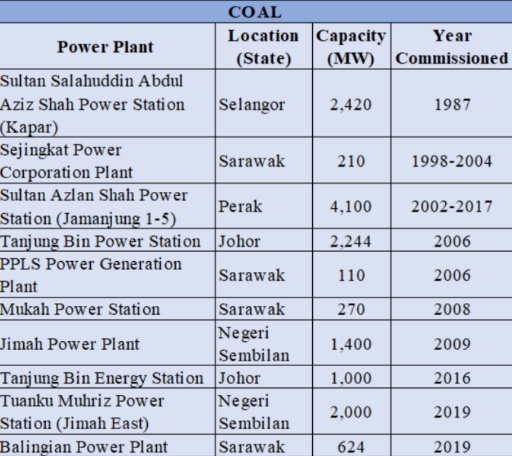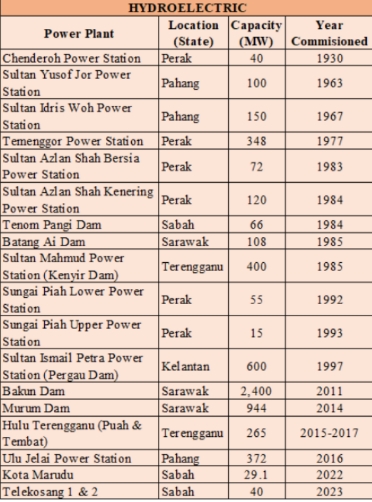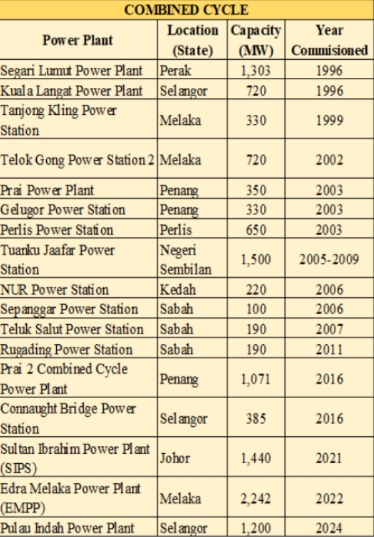Written by Irhamy Ahmad, Founder and Managing Director of Irhamy Valuers International
Malaysia’s power sector has undergone significant transformation, shifting from a reliance on fossil fuels to a more diversified and sustainable energy mix. Concerns over environmental sustainability, energy security, and efficiency have driven efforts to modernize and repower existing power plants while prioritizing cleaner energy sources.

For decades, coal-fired power plants played a crucial role in Malaysia’s electricity supply, with major facilities like the Sultan Azlan Shah Power Station (4,100 MW) in Perak and the Tanjung Bin Power Station (2,244 MW) in Johor contributing significantly to national generation. However, Malaysia has pledged to halt new coal plant construction and gradually phase out existing plants, marking a crucial step toward reducing carbon emissions and achieving a net-zero energy transition. For example, the Sejingkat Power Plant in Sarawak is set to cease operations by 2026.
The Role of Hydropower in Malaysia’s Energy Transition
Hydropower remains a key pillar of Malaysia’s renewable energy strategy, particularly in Sarawak. The Bakun (2,400 MW) and Murum (944 MW) dams provide a substantial share of the region’s electricity.

Upcoming hydroelectric projects reflect continued investment in sustainable energy, including:
Nenggiri Hydroelectric Project (300 MW) – Kelantan
Baleh Hydroelectric Project (1,285 MW) – Sarawak
The Expansion of Cleaner Natural Gas Technologies
In addition to hydropower, Malaysia is expanding its Combined Cycle Gas Turbine (CCGT) technology to improve efficiency and reduce emissions. Recent and upcoming CCGT plants include:

- Edra Melaka (2,242 MW, 2022)
- Pulau Indah (1,200 MW, 2024)
- Pulau Bunting Power Plant (1,600 MW, upcoming)
- Miri Power Plant (500 MW, upcoming)
- Kapar Combined Cycle Power Plant (2,100 MW, 2031)
These projects highlight Malaysia’s long-term commitment to a cleaner energy transition.


Instead of building new fossil-fuel-based plants, Malaysia is prioritizing:
Rebuilding, upgrading, and repowering existing power stations to improve
efficiency and reduce emissions.
Repowering projects, such as the Paka Repowering Project in
Terengganu, where the Sultan Ismail Power Station (decommissioned in
2019) is being repowered with advanced technology. Set for completion in
2030, this project aims to increase output while minimizing environmental
impact.
Recognition & Future Outlook
Malaysia’s energy transition efforts have earned regional recognition,
ranking second in Southeast Asia on the Energy Transition Index in 2024.
Modernization and Repowering of Existing Power Plants
Meanwhile, the decommissioning of older plants like the Sultan Ismail
Power Station (1988) and the mothballed Lumut GB3 (2002) reflects efforts
to modernize the energy sector.

As older fossil-fuel plants are retired and new, cleaner facilities come
online, Malaysia is advancing toward a
greener, more resilient power sector. The
focus on repowering, modernizing, and
integrating renewable enknaergy sources
will be pivotal in securing a sustainable
energy future.


